Are you looking to verify an undergraduate degree for yourself or someone else? Navigating the process can often feel daunting, but it's an essential step in ensuring educational credentials are legitimate and recognized. Whether for job applications, further studies, or personal assurance, knowing how to draft an effective verification request letter can streamline this process. Read on to discover a handy template and tips to make your degree verification request clear and compelling!
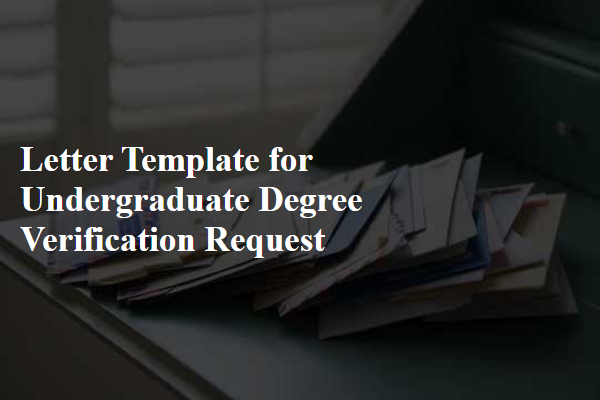
Applicant's Full Name and Contact Information
Undergraduate degree verification requests typically require specific details to ensure accuracy and effectiveness. An applicant's full name, such as "Johnathan Michael Smith," should be clearly stated. Contact information, including a professional email address like "johnathan.smith@email.com" and a phone number like "(555) 123-4567," facilitates easy communication. Additionally, providing relevant details such as the university attended, for instance, "State University of California," and the degree obtained, such as "Bachelor of Science in Computer Science," helps streamline the verification process. Furthermore, including the graduation date, such as "May 15, 2021," informs the verifying institution about the timeframe of the applicant's academic achievements.
Recipient's Name and Institutional Details
Outdated educational credentials might lead to issues in job applications or further academic pursuits. Degree verification requests must be sent to the appropriate departmental office at the educational institution, which often includes the registrar's office or academic affairs. Essential details include the recipient's full name, title (like Registrar), institution name (e.g., University of Example), mailing address, and contact information, such as phone number or email. Providing specific information about the degree, including the type (Bachelor of Arts in Psychology), date of graduation (May 2022), and student identification number, can expedite the process significantly. Important to clarify the intended use of the verification, whether for employment, further education, or professional licensing, will also assist the institution in processing requests more efficiently.
Degree Information (Program, Graduation Date)
An undergraduate degree verification request typically involves confirming details such as the program of study and the date of graduation. Degrees like Bachelor of Arts (BA) or Bachelor of Science (BS) often require documentation from the issuing institution, which may include the university name, program title, and specific graduation date, such as May 15, 2023. Academic transcripts may also be necessary, highlighting completed courses and grades, to ensure the authenticity of the degree conferred. These documents assist employers or educational institutions in verifying educational credentials and ensuring compliance with job qualifications or further educational prerequisites.
Purpose of Verification Request
A verification request for an undergraduate degree serves as formal confirmation of an individual's academic credentials. This process is essential for various purposes, such as employment consideration, further education applications, and professional licensing opportunities. Institutions, employers, or third-party verification services utilize this request to authenticate the integrity of educational qualifications obtained from universities or colleges. Verified information typically includes the degree type, major field of study, graduation date, and the conferring institution's accreditation status. Ensuring accuracy in these details is crucial, as discrepancies can lead to complications in career advancement or enrollment procedures. Additionally, some organizations may require this verification to comply with legal standards or industry regulations.
Signature or Digital Verification Method
Undergraduate degree verification requests often require specific identification methods to authenticate the documents. Institutions may require a traditional handwritten signature or a secure digital verification method, such as a blockchain-based proof of credentials. Verification processes typically involve the involvement of registrars' offices (higher education administration departments managing student records) and can vary across universities. Many institutions emphasize the importance of secure methods to protect students' personal information (like Social Security numbers) during verification. Providing clear instructions regarding necessary documentation (like transcripts or diplomas) alongside identification methods can expedite the verification process efficiently.
Letter Template For Undergraduate Degree Verification Request Samples
Letter template of undergraduate degree verification request for employment purposes
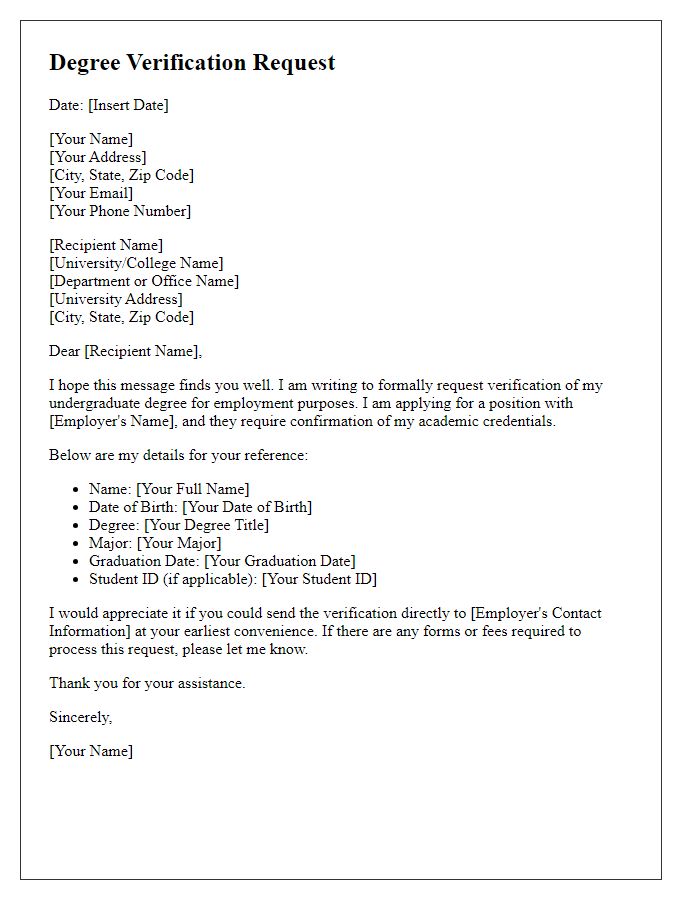
Letter template of undergraduate degree verification request for further education
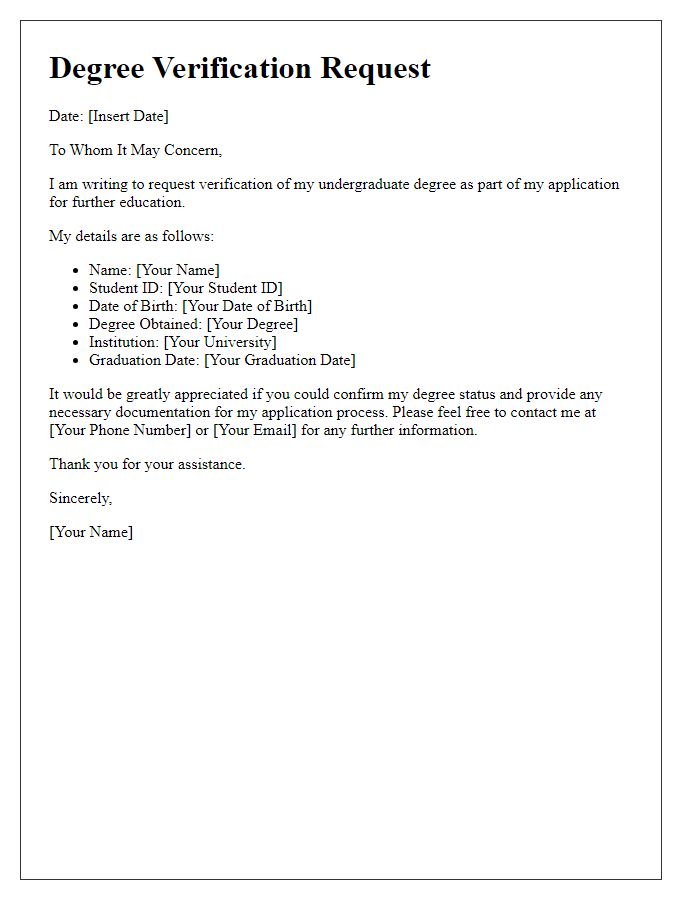
Letter template of undergraduate degree verification request for professional licensing
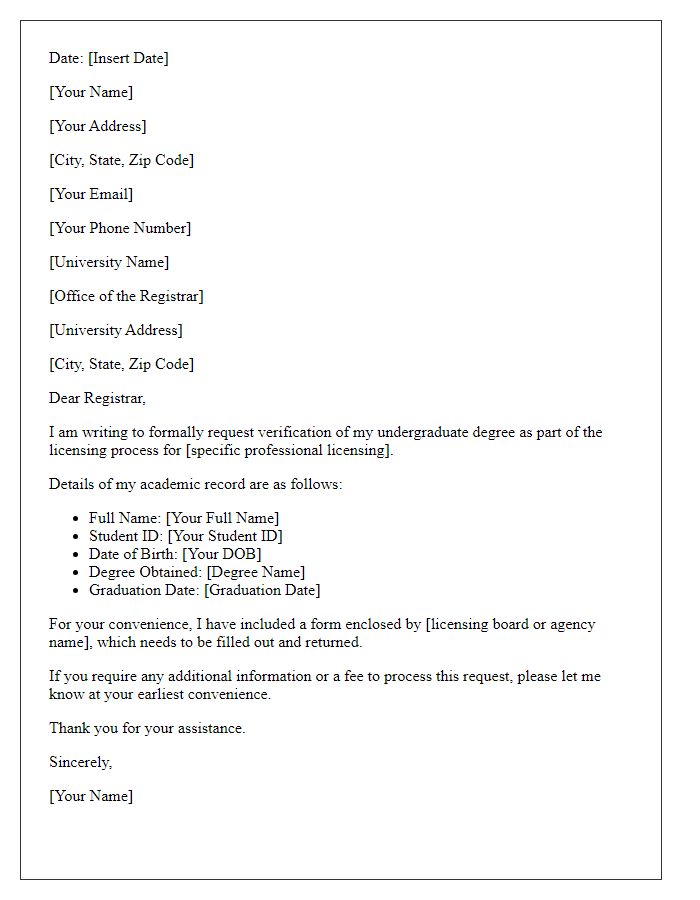
Letter template of undergraduate degree verification request for scholarship application
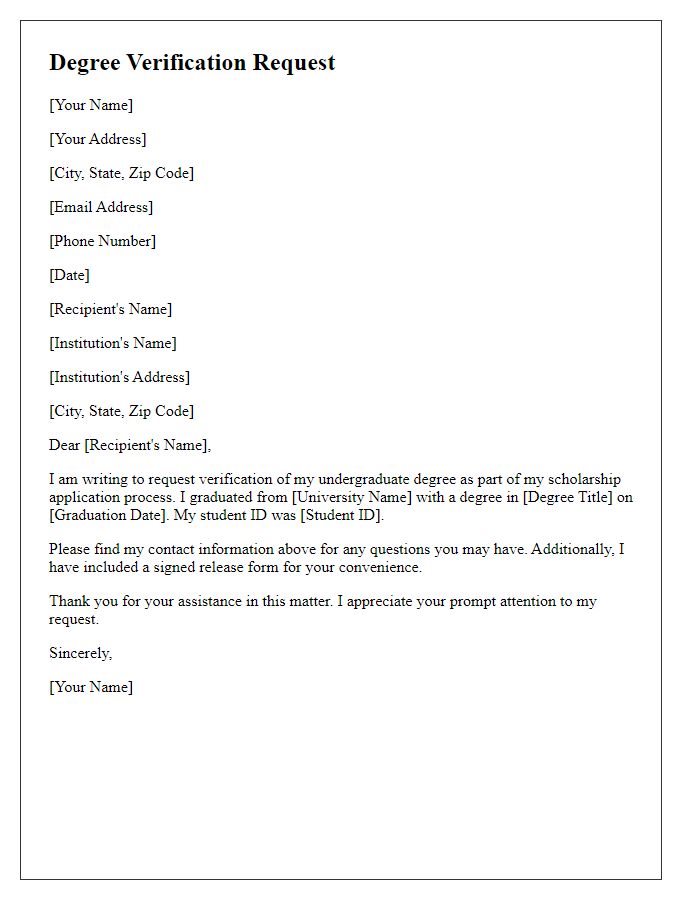
Letter template of undergraduate degree verification request for background check
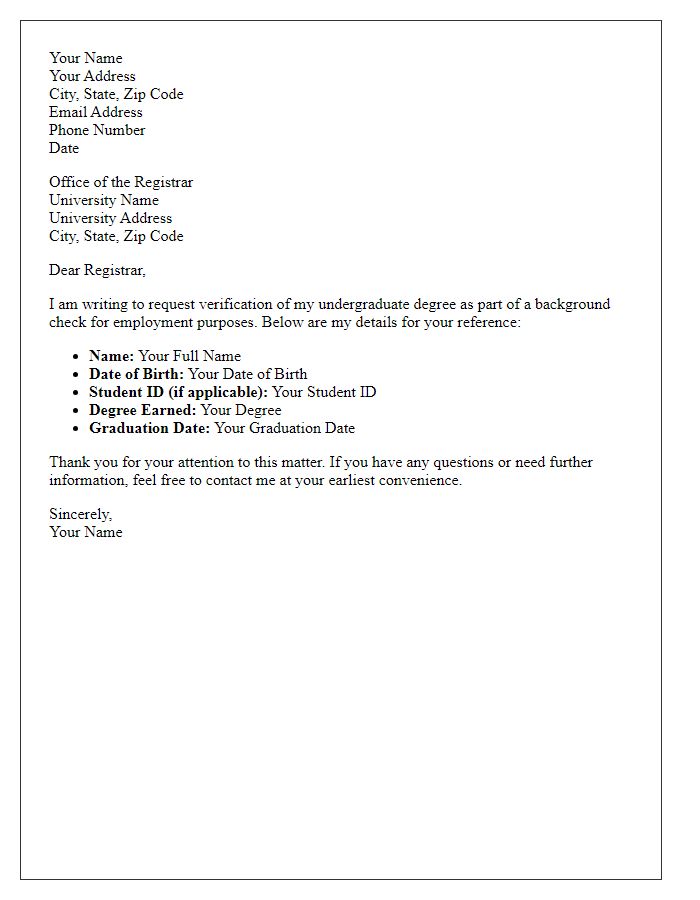
Letter template of undergraduate degree verification request for immigration purposes

Letter template of undergraduate degree verification request for a character reference
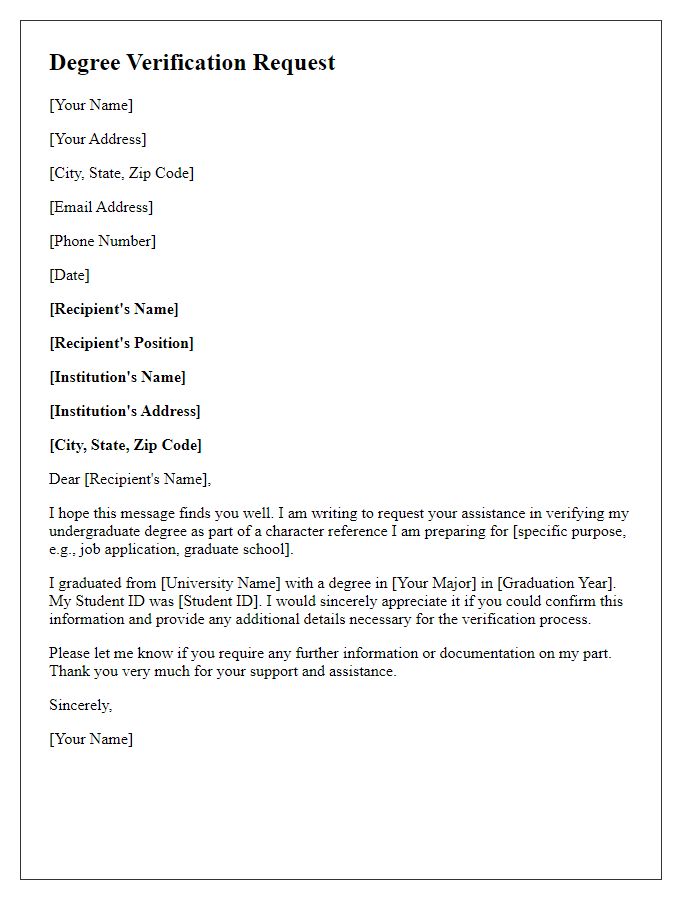
Letter template of undergraduate degree verification request for internship application
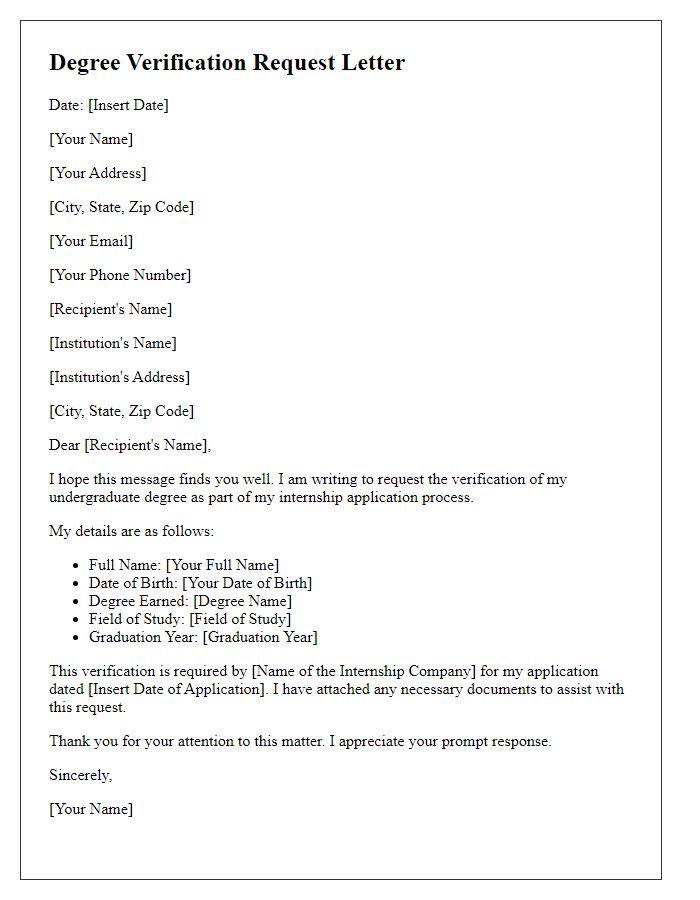
Letter template of undergraduate degree verification request for academic records
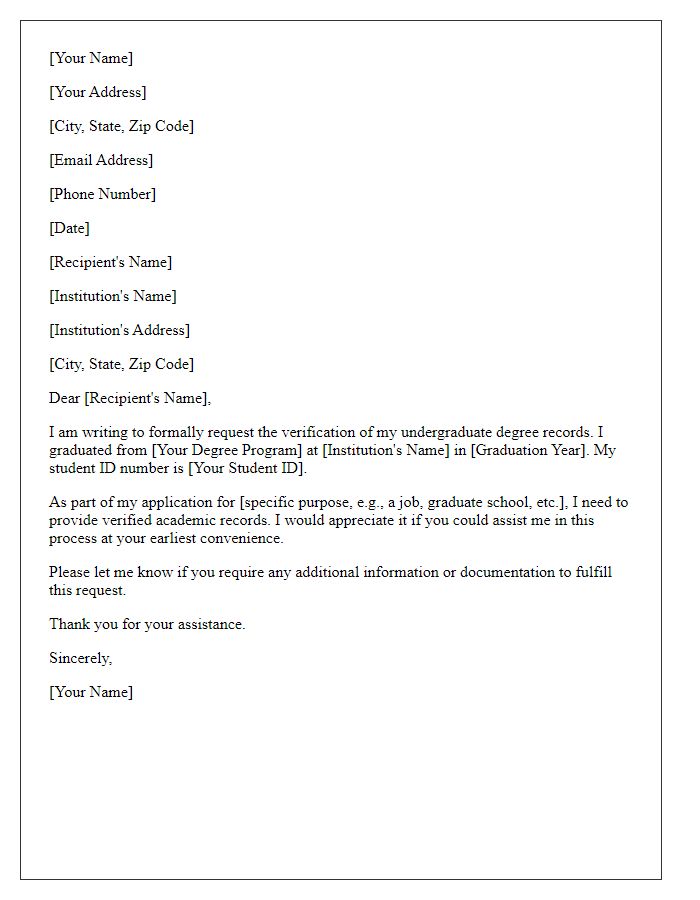

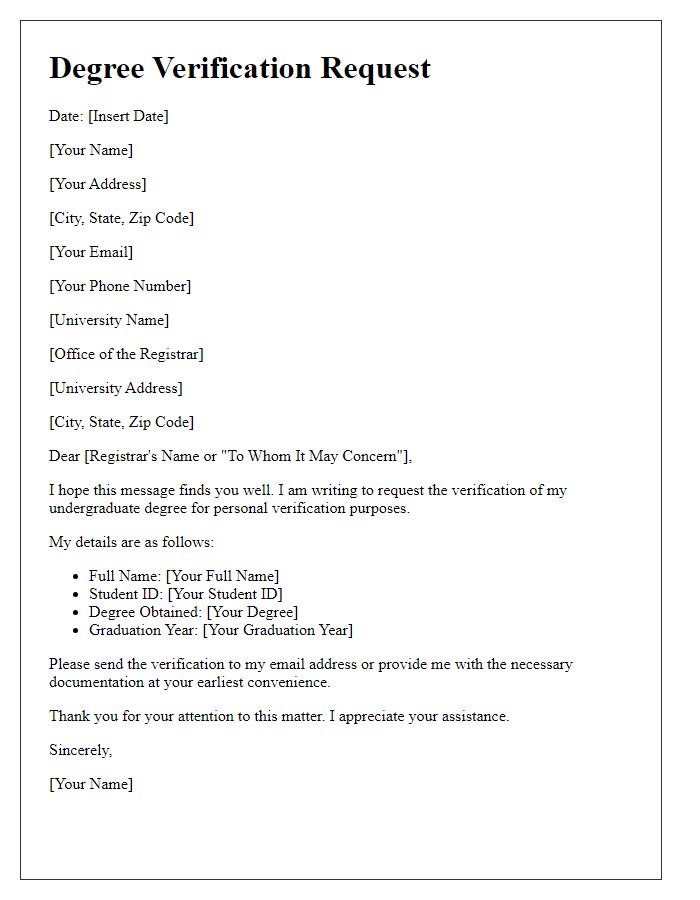


Comments